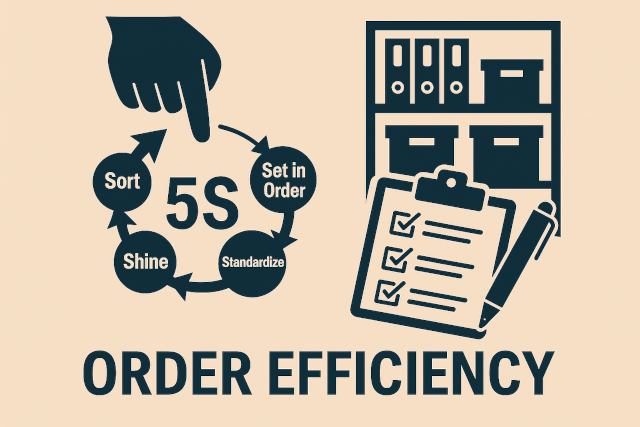Most warehouses are visually noisy—but informationally silent.
Labels, signage, floor tape, and whiteboards often exist—but they don’t always communicate. And when visual management becomes wallpaper, problems stay hidden, time gets lost, and teams disengage.
But done right, visual systems are one of the most powerful tools in a Lean warehouse.
They make flow visible. They make waste obvious.
And—when used well—they shift ownership from the manager to the team.
Here’s how to unlock daily wins through simple, smart visual management.
1. Make the Floor Speak
The best operations don’t need a tour guide. You should be able to walk the floor and know:
- What’s running and what’s not
- What’s staged, missing, or delayed
- Where people are meant to work—and what good looks like
Start small:
- Color-coded staging zones (Inbound, QC Hold, Ready to Pick)
- Clearly labeled pick faces or racking rows
- Floor markings that actually mean something—not just paint from 2017
- Simple visuals on cages or trolleys (e.g. “This side out” or “Next stop: Dock 6”)
Daily win: Fewer interruptions, faster onboarding, and less tribal knowledge required to function.
2. Use Whiteboards That Actually Get Used
Too many whiteboards become Lean theatre—neatly gridded but never updated.
To fix that:
- Keep it relevant. What does the team need to know today?
- Assign ownership. If no one is responsible, it fades.
- Go analog if needed. Magnets, markers, card slots—whatever lowers friction and increases interaction.
Great visual boards answer questions like:
- What are today’s volume targets?
- Are we ahead or behind right now?
- What problems popped up—and what’s the fix?
- Who’s working what zone?
Daily win: Shared understanding, faster shift transitions, and fewer “Did anyone tell you?” moments.
3. Make Abnormal Obvious
One of the most powerful functions of visual management is triggering action. Not just displaying information—but surfacing when something’s wrong.
Examples:
- Shadow boards that highlight missing tools
- Kanban cards that show low stock or signal resupply
- Colored bin tags for “ready,” “in progress,” or “needs rework”
- Outbound pallets marked clearly with lane or carrier
When abnormal is visible, teams don’t wait. They act.
That’s when Lean starts moving on its own.
Daily win: Issues caught earlier, smoother handovers, and less firefighting.
4. Build Visuals With the Team, Not For Them
Nothing dies faster than a manager-built board no one wanted.
Instead:
- Ask the team: What do you check every day? What takes too long to find?
- Co-design labels, floor marks, or dashboards with them
- Trial ideas using tape, magnets, or printed paper before committing to permanent installs
People are far more likely to use what they helped create. And they’ll also be the first to improve it.
Daily win: Visuals that evolve, stay relevant, and are truly owned by the floor.
5. Don’t Stop at Physical Visuals
Digital boards, screens, and dashboards have their place—especially when integrated with WMS or picking systems. But technology should amplify visibility, not complicate it.
- Digital order boards by zone
- Real-time dispatch cues by dock door
- Cycle count dashboards with aging alerts
Just make sure:
- It’s always accessible to the team
- It doesn’t require IT to update
- It solves a visibility problem—not just looks good in a tour
Daily win: Fewer emails, faster decisions, and less reliance on memory.
Final Thoughts: Visuals Are for People, Not Just Pallets
Great visual management isn’t about tape or templates.
It’s about making the right thing to do—the easy thing to do.
It creates clarity without saying a word.
It invites action without micromanagement.
And it builds trust by showing that information is shared—not hoarded.
In Lean warehouses, what you see should be what’s happening.
When your visuals match your reality, you’re not just managing pallets.
You’re empowering people.


